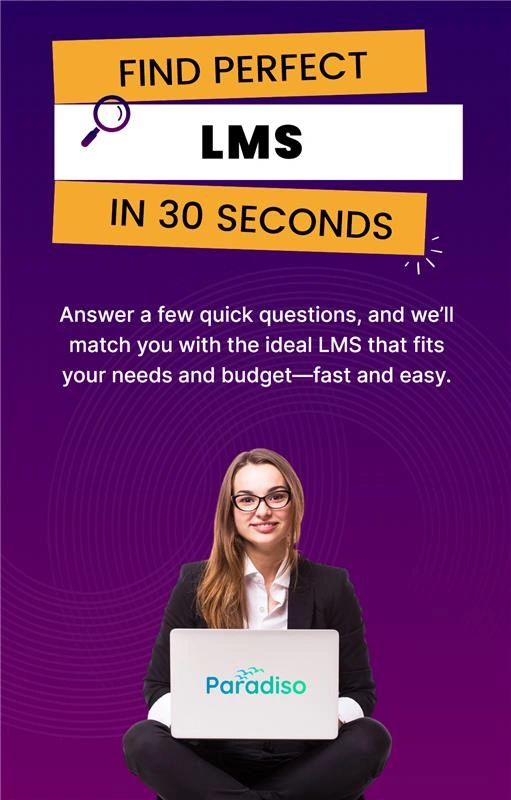If you’re building learning experiences or leading training initiatives, you’ve probably asked this at least once: Which free authoring tools are best for eLearning? With shrinking budgets but rising training demand, free elearning authoring tools feel like the perfect compromise. But not all free tools are created equal.
The right choice can streamline your workflow; the wrong one can create content debt and maintenance headaches. Use this guide to evaluate fit, not hype—then validate with a quick stress test before committing.
1) Ease of Use
Your tool should empower—not intimidate—authors and SMEs (Subject Matter Experts). A low learning curve accelerates time-to-impact and reduces rework.
- Look for clean UI, predictable menus, and WYSIWYG editing —meaning “What You See Is What You Get,”.
- Prioritize drag-and-drop and in-app guidance for non-technical users.
- Example: H5P enables quick, intuitive interactivity building.
2) Interactivity and Engagement
Free doesn’t mean passive. You still need active learning—quizzes, interactive video, hotspots, and light branching—to drive outcomes.
- Choose a tool with a solid library of common interactions.
- Favor a few reusable patterns to speed authoring and maintenance.
- Example: AI-assisted tools like Paradiso Authoring Tool can generate first-draft quizzes and checks.
3) Compatibility with Standards (SCORM, xAPI, HTML5)
Standards prevent your course from becoming a standalone island and ensure tracking, portability, and interoperability.
- SCORM 1.2/2004: Baseline tracking and completion in most LMSs.
- xAPI: Rich event-level analytics for wider learning experiences.
- HTML5: Cross-device compatibility and resilience in modern browsers.
- Example: eXeLearning is a dependable free option for SCORM-compliant modules.
4) Device Responsiveness
Learners are mobile; content must be too. Responsive design ensures accessibility across desktop, tablet, and phone without rebuilding.
-
- Prefer mobile-first templates and flexible layouts.
- Minimize reliance on custom CSS for responsiveness.
- Example: Adapt Learning specializes in responsive, mobile-ready courses.
Free AI-Powered eLearning Authoring Tools
Leverage the power of AI to create engaging, interactive, and professional eLearning courses in minutes—without complexity or coding.
5) Collaboration and Workflow Fit
Match tool capability to how content actually moves: SME drafts, ID polish, reviews, and publishing. Misfit here creates delays and rework.
- Check multi-author support, review flows, and handoff ease.
- Define naming, versioning, and packaging from the start.
- Rule of thumb: Align tool complexity with your workflow—not the other way round.
6) Scalability and Upgrade Path
Free tiers may cap storage, analytics, or collaboration. Think beyond the pilot: if it works, can you grow without a disruptive switch?
- Check template reuse, component libraries, and design system compatibility.
- Confirm LMS integrations and reporting needs are met at scale.
- Note: Open-source options scale with templates; hosted tools may offer premium upgrades.
Quick Checklist to Pressure-Test Your Choice
- IF your team is new to authoring → choose simplicity first (Paradiso Authoring Tool, H5P).
- IF mobile-first is critical → prioritize responsiveness (Adapt Learning).
- IF standards compliance is non-negotiable → ensure SCORM/xAPI exports (eXeLearning).
- IF scale is your long-term goal → verify upgrade paths and template governance early.
A 60–90 Minute Stress Test (Run This Week)
Validate candidates in your real environment before committing:
- Build: One 3–5 minute micro-module, one interactive element, a 3-question quiz, and a completion trigger.
- LMS: Upload; confirm SCORM/xAPI settings and completion reporting.
- Accessibility: Keyboard-only pass, focus order, alt text, captions/transcripts.
- Responsiveness: Test on phone, tablet, and desktop across two browsers.
- Performance: Check load time, media compression, and package size.
- Maintainability: Make a small change, re-export, redeploy—measure friction and time-to-fix.
Debrief: What broke first—tracking, consistency, or author time? That’s your primary constraint.
Trade-Offs to Accept Upfront
- Control vs Throughput: More templates and governance reduce creative spontaneity but slash rework.
- Bespoke vs Consistency: Fancy layouts look great but complicate localization and updates.
- Desktop vs Cloud: Offline reliability can slow collaboration; cloud speeds reviews but may face IT constraints.
- Features vs Outcomes: Prioritize maintainability, accessibility, and tracking over exotic interactions.
Workflow Tips That Save Time
- Create a minimal design system: typography, spacing, interaction patterns, quiz styles.
- Standardize packaging: file naming, version tags, and SCORM/xAPI settings with a one-page checklist.
- Build a reusable micro-module template to reduce time-to-ship and align expectations.
- Embed accessibility checks in your Definition of Done; treat them as pass/fail gates.
- Document the review workflow to avoid bottlenecks and content drift.
Conclusion
Free eLearning authoring tools are genuinely capable when chosen for fit, not flash. Let speed-to-impact, standards compliance, and sustainability drive the decision. Start small: shortlist two options, run a 60–90 minute stress test, and score them on scale, governance, speed, quality, and maintainability to see what actually works in your environment.
Use each tool for its strengths: leverage Paradiso Authoring Tool, a free eLearning authoring platform, to quickly create outlines, scripts, and quizzes; H5P for fast, embeddable interactivity; Adapt for responsive, standards-based courses at scale; and eXeLearning for reliable offline packaging. Combine tools where it adds value, prioritize accessibility and data integrity, and establish templates early. The best tool is the one that enables teams to deliver high-quality learning faster—with minimal rework.
Your Next-Level eLearning Solution
Unlock all the features you need to create impactful learning experiences—completely free.
Book A Demo Now
















